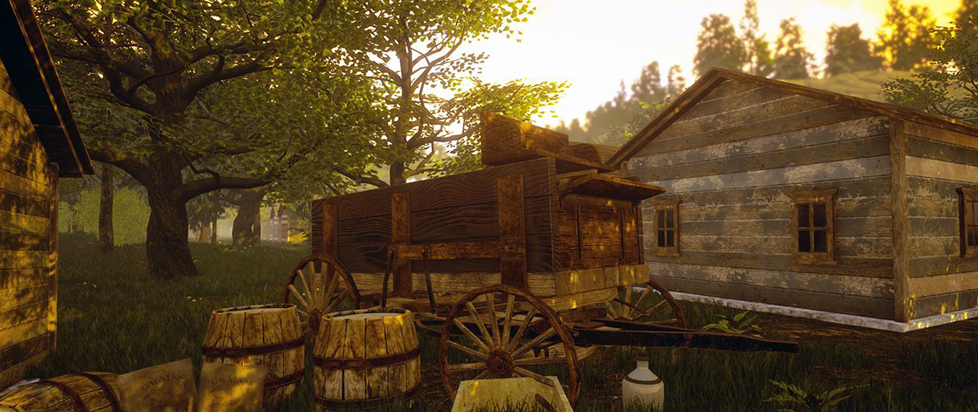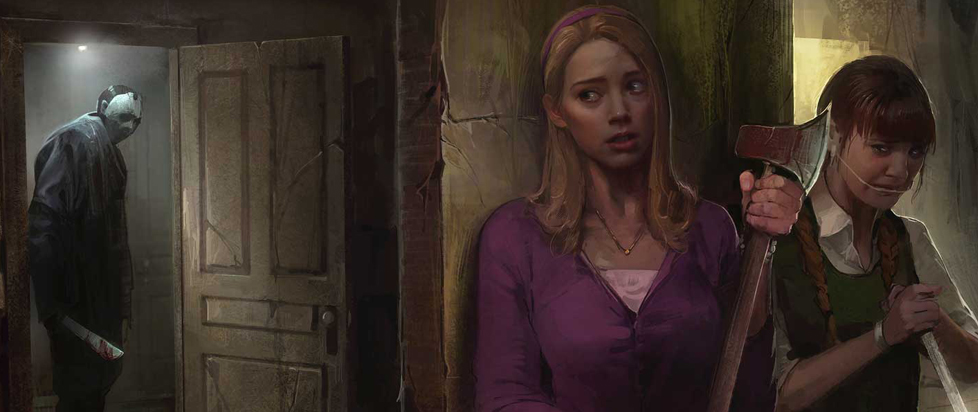
Mine 18
 This story is a reprint from Unwinnable Monthly #105. If you like what you see, grab the magazine for less than ten dollars, or subscribe and get all future magazines for half price.
This story is a reprint from Unwinnable Monthly #105. If you like what you see, grab the magazine for less than ten dollars, or subscribe and get all future magazines for half price.
———
This series of articles is made possible through the generous sponsorship of Epic’s Unreal Engine. While Epic puts us in touch with our subjects, they have no input or approval in the final story.
———
A team of college students from Eastern Kentucky University is creating a time machine.
It’s called Mine 18, a walking simulator inspired by the natural landscape and the coal mines of Blue Heron, Kentucky. Blue Heron is a ghost town, one of many settlements in Appalachia that sprung up around the coal industry in 1930s, only to fade away a few decades later. Mine 18 is a fictive recreation of Blue Heron that allows players to explore both a replica of the current environment and the lives of the people who lived there in the past.
The game started out as a class assignment to create an interactive environment. Lead developer Lacey Lansaw turned to game design after receiving a master’s degree in applied anthropology, as a way to, well, apply her learning in a more engaging way. Along with the rest of the class, Lansaw created the original version of Mine 18, more a portfolio piece for environment and prop art than a fully realized game.
The team worked to expand its interactive elements, adding journal entries, an inventory system and an end game in order to qualify for the ESA’s College Game Competition at this E3 2018 – all within about a week and half before the competition deadline. The competition selected Mine 18 as one of the top five and EKU sent Lacey and got to attend their first E3 exhibiting their game.
Lacey took time out of developing from Mine 18 from a demo into a full-fledged game to chat with us about Blue Heron, her E3 experience and her hopes for the game.
 Let’s start with a look to the future. What do you hope Mine 18 will be in its final form?
Let’s start with a look to the future. What do you hope Mine 18 will be in its final form?
Now that we have had time to actually think about the feedback we have gotten and where we actually want the game to go we’ve added in a more intriguing narrative and interesting gameplay. Play as a young archaeologist in search of her long lost grandmother as you explore an abandoned mining town located at the base of a dam that is about to collapse. As you play you will discover real stories about the history of Appalachia while attempting to make it to see your grandmother one last time.
What inspired Mine 18? Do you have a personal connection to Blue Heron?
We created the game for a class project. We chose Appalachia as our setting because it’s not something that is represented very well in media. A handful of us grew up in Appalachia and we recognize the beauty and diversity of the region. It was also something that was accessible to us as students going to Eastern Kentucky University. Appalachia is literally outside of our window. Going forward we really want to show Appalachia in a light that is more accurate and positive. Most of us are from Appalachia so we have a real appreciation for what it means to be from this region.
Mine 18 is a walk through history. How did you go about collecting the stories in the game?
For the E3 demo, we made up stories relating to black lung, a real danger, then and now, in mining communities. Since E3, we have been doing a lot of research. We’ve reached out to historians and sociologists to gather information and oral stories from Appalachian people. For the final release we are hoping to feature true events and stories. There are wonderfully full collections of oral stories at EKU and UK that we will be pulling from.

How much of Mine 18 is a 1-to-1 recreation of Blue Heron? What’s your process for recreating an existing ghost town? How do you balance recreation against the constraints of creating a playable environment?
We used a lot of creative freedom when recreating Blue Heron. Since it was for a class, we really didn’t have that much time to go down and visit so we used Google Images. Some of us had been there before so we relied on those people to help us as well. The coal tipple, the bridge and the river are pretty accurate though. Going forward we are actually using height map data from Blue Heron and other Appalachian towns to create a fictional town that will represent central Appalachia.
It’s difficult to make a game fun and have it be super realistic at the same time. Reality is boring and in a game world, the landscape might not make sense. We had to change the environment around Blue Heron a lot just so we could block the player from jumping off the map completely. For this game we are going to combat this obstacle by combining landscapes from different towns and telling real stories, showing real culture. It will be historical fiction, but just because it’s fiction doesn’t mean we can’t learn something from it, so I would also call it an educational game.
Have folks in the area seen the game? How did they react?
Yes! We have had people from the area play it and go “Hey, I’ve been drunk on that river” or “We would run across that bridge all the time as kids!” We’ve had people say how scary accurate it is, especially the coal tipple and bridge.
 What led you to use Unreal Engine 4 for the game?
What led you to use Unreal Engine 4 for the game?
Most of us had only ever used Unity and we wanted to learn something different. We also heard a rumor that it was easier to make your game look really high quality with Unreal and we wanted to make our game look at realistic as we could. At this point, a lot of people on our team have spent so much time in UE4 using Blueprints, doing technical art things so we are just going to continue with it.
You participated in this year’s E3. What was that like? How did folks in the larger videogame world react to Mine 18?
E3 was amazing, I only hope that I can have an experience like that again. It was absolutely insane going in early as exhibitors and seeing first hand all the cool displays and being able to get in line early to play various games. Being able to showcase our game was the best part. Our demo was a walking simulator so some people weren’t that into it, but we still had quite a few people who were amazed at what we were doing. We had AAA industry professionals come play our game and compliment us on the quality, especially since it only took us three months to get it out. Going to E3 really inspired us to keep working on Mine 18 because people are interested in the other, truer, side of Appalachia. People want to see what Appalachia can do and we are going to try to show them.
———
You can play a the E3 demo of Mine 18 now. It is available for download at Itch.io. For more on the development of Mine 18, follow the team on Twitter, Facebook and Instagram.




